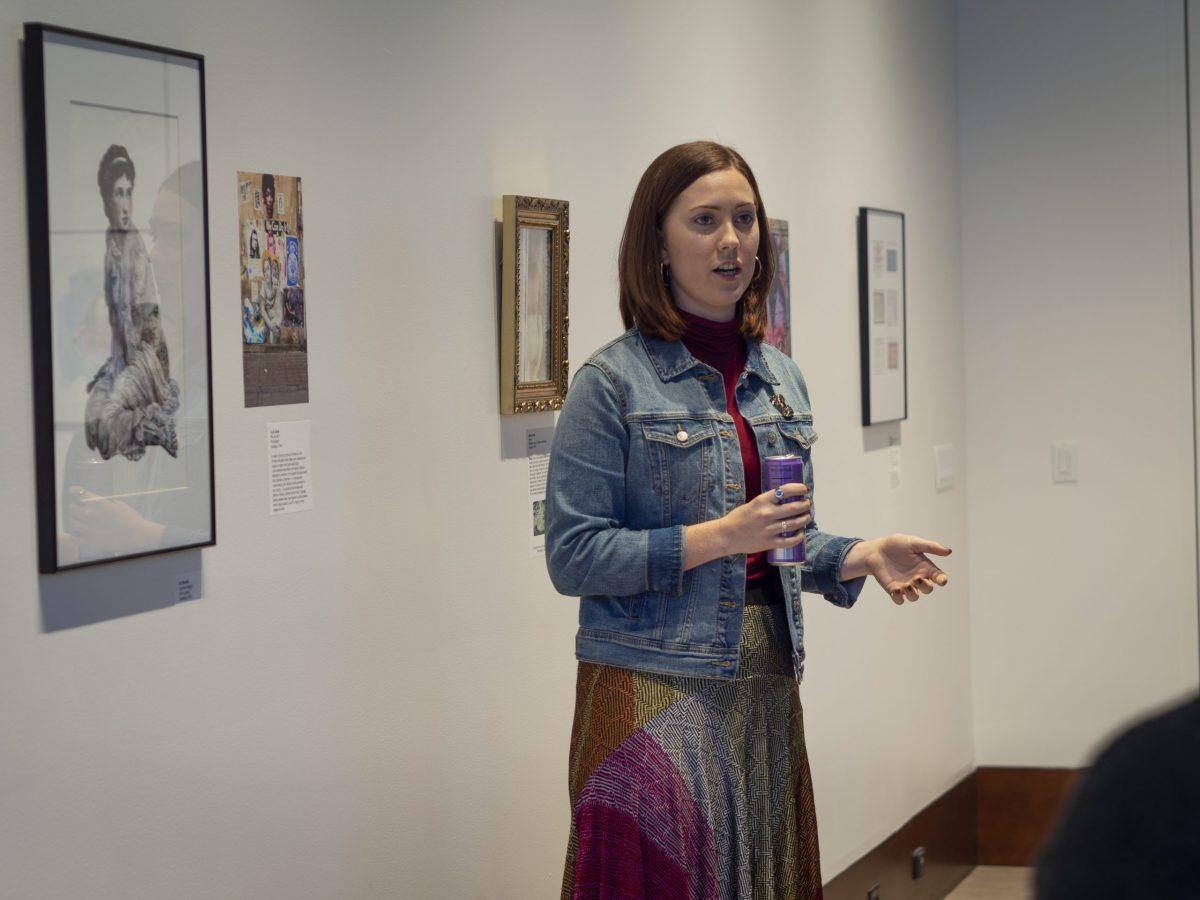Lydia Estes debuts her art exhibition on being a woman in South America
“I was very lucky to be raised by creative women – to know that in my life and to recognize that in the generations that very much inspired me,” reflected Lydia Estes ‘20, holding back tears, while her mom smiled with pride. This was the aura of the evening of Oct. 24, as Estes opened her art exhibition titled “Siendo Mujer: A short study of the female experience in South America.”
Honored as Wofford’s 25thPresidential International Scholar during her sophomore year, Estes was given the chance to study abroad in the South American countries of Chile, Argentina, Uruguay and Peru. There, she conducted research about women who use art as an outlet to exhibit their female experiences, which gave her the title of her exhibition “Siendo Mujer,” which translates to “being a woman.”
Estes’ collection of art includes artwork from some of the women she met abroad as well as photographs she took of these women and their unique spaces. Estes has built up a solid collection of art throughout her seven months abroad along with a handful of tear-jerking and intimate stories about meeting South American women and discussing their experiences.
So, how did Lydia even approach a feat such as this? As she described, “it started in a lot of different ways, but mostly, it was Instagram DMs…I needed people to talk to me about what they do and why they do it.” She explained that the role of social media in her research was huge, as she needed to find women who not only used art as a medium for their female experience, but were also willing to talk about it.
The first piece of art she presented, “Venus,” was created by Mikele Orroño, a Chilean artist whose artwork combined a photo from a pornographic magazine with Botticelli’s “The Birth of Venus,” creating an almost perfect mash-up of the two. As Estes described, the artwork was “drawing attention to the way that historically, women had been put into a box. A box framed for men to look at and view…there were two ways that women were portrayed, and portrayed by men, at that, and that was either the Madonna the virgin, or the whore.”
According to Estes, the way that Orroño combined these two images, begged the question, “Is she the Madonna and the whore? Or is it crazy that we put them in this box, because she should be neither, or she can be whatever she wants to be?”
The virginal woman was a common theme among much of the artwork Estes displayed, including a drawing by Sol Barrios, which displayed a ‘virginal woman’ with artwork covering her skin, making the viewer take a closer look. Among art from women claiming their spaces in society were photographs Estes took of murals and people, including a bridge in Peru, which was covered in a colorful ‘equilibrio,’ meaning balance.
Estes concluded her presentation by describing the bridge with the following quote: “it makes me think of the word equality…it’s this bridge that’s spanning two sides of the street…what that tells you is that balance is what connects us.”
Her exhibition is open to the public until the end of the semester in the Richardson Family Art Gallery in the Rosalind Sallenger Richardson Center for the Arts. Stop by to see all of the artwork she accumulated during her time abroad and read about her experience!






























